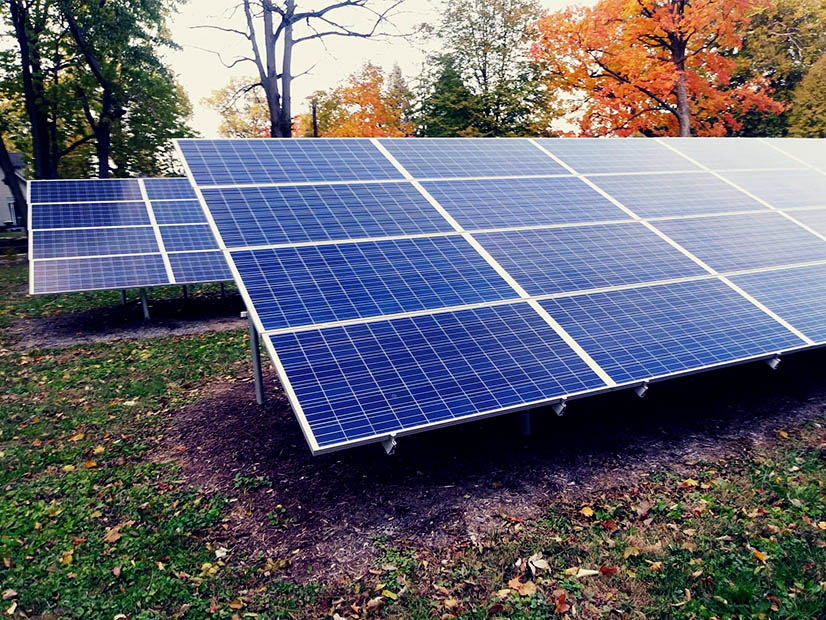Midwest Reliability Organization’s annual reliability conference last week emphasized the inevitability of the transition to clean energy and avoiding future supply shortfalls with more generation and transmission.
“I don’t have to tell you that we’re seeing a transition in the resource mix,” Mark Lauby, NERC senior vice president and chief engineer, told conference attendees Wednesday.
Lauby said it’s not that today’s fuels are “inherently less secure,” but they are more uncertain. He said reliability should extend beyond the one day in 10-year standard to more multidimensional rules of thumb. He also said he “very forcefully believes” that the country is going to need more transmission projects, although they may be difficult to build.
Lauby said the grid needs more energy, not capacity, to serve future load.
“Capacity was king, but the king has no clothes,” he said. “It was a good trick and we got away with it for a while.”
MRO COO Richard Burt said energy and load are now unreliable variables, to the point where he questions reserve margins. He said that from 2010 to 2020, capacity in North America has dropped by 23 GW while load has grown by 85 GW.
“We’ve created a 100-GW gap,” Burt said.
Currently, MRO estimates that its footprint contains almost 51 GW of wind generation and about 1 GW of solar generation between MISO, SPP, Saskatchewan Power and Manitoba Hydro. But those entities’ interconnection queues show that 43 GW of wind generation and a whopping 102 GW of solar are planned by 2031.
“We could have more solar than wind in 10 years,” Burt said, adding that if all the potential solar is built, it will cover a surface area that spans “all the Disney parks” 40 times over.
Lauby said the transition to renewables is a “good thing” for the country but will require a rethink of reliability.
“It’s time now to no longer admire the problem. It’s time to solve the problem,” he said, noting solutions will require participation from not only the industry, but also state and federal government.
NERC’s Energy Reliability Assessment Task Force might lean toward requiring a new energy reliability assessments standard, Lauby said, but NERC must tread carefully and continue to abide by its policy of not prescribing generation or transmission construction.
“If shedding load is the answer, then that’s the answer,” Lauby said.
Mark Ahlstrom, NextEra Energy Resources’ vice president of renewable energy grid integration, called the resource shift “huge and inevitable.” He said that although “there’s no shortage of technology” to aid the transition, wholesale markets will have to adapt to the disruption.
“We’re talking changing not just the hardware, but markets. … It can be overwhelming, or it can be fascinating,” Ahlstrom said.
He said every renewable energy prediction that the U.S. Department of Energy or the National Renewable Energy Laboratory issued about 15 years ago has now been “far exceeded.” He also pointed out that the nation had about 100 years to perfect reliable electricity delivery using thermal generation.
“It’s not that they were prefect; they have their quirks,” Ahlstrom said of thermal generators, adding that new software is necessary to furnish services that complement clean energy sources.
Despite supply chain issues and solar panel tariff disputes with China, Ahlstrom was bullish on investing in renewable energy and storage facilities. He predicted that prices on commodities like gas, oil and coal will continue to rise.
He said grid operators’ GI queues are hampering new generation and the wait times are so long that some study models must be revised because better technology options are available by the time generation can connect. He said a five-year IC timeline doesn’t make sense when inverters available to developers change and advance about every two years.
Ahlstrom criticized MISO and SPP’s affected system study process for being inconsistent, sluggish and resulting in pricey network upgrades that upend projects.
“We can’t build a future transmission system using band aids from one generator at a time,” he said. “If we’re going to get to [net-zero emissions by] 2050, we’ve got less than 28 years to build massive transmission.”
Ahlstrom said the nation can use an HVDC national backbone and, though it may be unpopular, a national transmission planning committee to recommend projects.
“Society will still do this; it’ll just be twice as expensive,” he said of the pendulum swing to clean energy.


